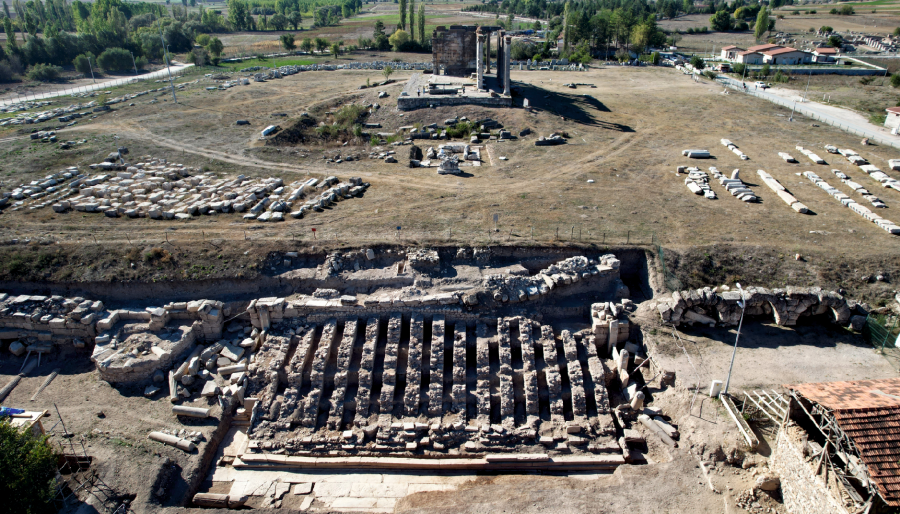Research History
The exploration of Aizanoi Ancient City, carried through the travelers who came to Asia Minor in 19th century for diplomatic, military or exploratory reasons. The first exploration is said to be realized by the 3rd Count of Ashburnham, George Ashburnham. Later, in order of chronology, St. Asaph in 1842, Comte Alexandre de Laborde, Dr. Hall, Mr. Becker and Leon de Laborde in 1827, George Thomas Keppel in 1829, the Crusade historian Joseph-François Michaud in 1830, Charles Félix Marie Texier in 1834 and 1847, English geologist J. William Hamilton visited the city and mentioned the ruins of Aizanoi in their articles and books.
First scientific archaeological excavations in Aizanoi Ancient City started in 1926 by Deutsches Archaologisches Institut with the management of D. Krencker and M. Schede. These excavations carried through since 1928 with the same equip in and around Temple of Zeus.
The second term excavation work realised between 1970 and 1982, with the leadership of R. Naumann (1910 – 1992). This works concentrated in thermal buildings in the city.
Third period excavation works, carried through between 1982 and 1990, headed by A. Hoffmann in the Theater-Stadion building complex.
Fourth term works presidency took over by K. Rheidt between 1990 and 2007. K. Rheidt, with A. Hoffmann, studied the temple, stadion and Roman bridges. Also in this years, restoration and conservation implementations in quay walls of Penkalas river, Roman bridges, Temple of Zeus took over and historic topographical search of Aizanoi began.
Fifth term excavation researches carried on by R. V. D. Hoff between 2008 and 2009. In this term the works especially concentrated in Hellenistic and Byzantine periods.
Sixth term excavation works carried out by Prof. Dr. Elif Özer between 2011 and 2020. In Temple of Zeus and its periphery, Thermal-Palaestra, Bouleterion/Odeon, Penkalas, South and North Necropolis, and Theater-Stadion building complex, several excavation works and research studies took place.
In 2021, under the management of Kütahya Musem and member of Kütahya Dumlupınar University Prof. Dr. Gökhan Coşkun as scientific advisor, scientific archaeological excavations started again. With the decree of President of Republic of Türkiye in 2022, the presidency of Aizanoi Archaeological Excavations took over by Prof. Dr. Gökhan Coşkun. The works continues in Agora, Proyplon, Theater and Penkalas river.
Last Update Date: 14 June 2023, Wednesday



